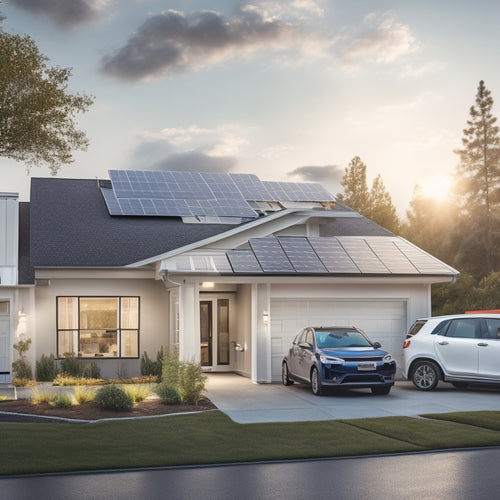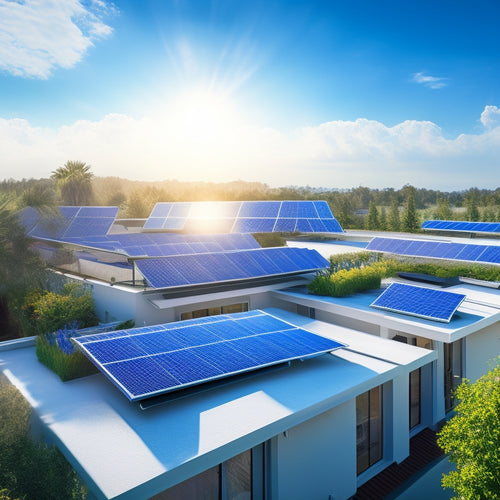
Why Electric Motorcycles Fail at Long-Distance Touring
Share
You're likely familiar with the excitement of hitting the open road on an electric motorcycle, but you're also smart to wonder why they often fall short when it comes to long-distance touring. The limitations of battery capacity mean frequent recharging, adding hours to your trip. Charging infrastructure is scarce, especially in rural areas, making route planning vital. Design limitations, like weight and aerodynamics, reduce efficiency and range. And let's not forget range anxiety, which can turn a thrilling adventure into a stressful one. There's more to the story, and you're about to discover why electric motorcycles still have a way to go.
Key Takeaways
• Limited battery capacity and low energy density restrict electric motorcycles' ability to travel long distances without frequent recharging.
• Sparse charging infrastructure, especially in rural areas, makes long-distance touring challenging and requires careful route planning.
• The weight and aerodynamic design of electric motorcycles affect their efficiency and range, with high speeds increasing energy consumption.
• Range anxiety remains a concern due to the risk of being stranded, emphasizing the need for careful planning, research, and constant battery level monitoring.
• Lack of standardization in charging systems, payment methods, and regulatory barriers hinder the widespread adoption of electric motorcycles for long-distance touring.
Limited Battery Capacity Holds Back
Your electric motorcycle's battery capacity severely restricts its ability to cover long distances, leaving you stranded with a dead battery and limited charging options on the highway. This limitation is due to the current state of battery technology, which hasn't yet reached the energy density required for extended long-distance travel.
As a result, you're forced to carefully plan your route, constantly monitoring your battery life to avoid running out of juice in the middle of nowhere.
The energy density of your battery, measured in watt-hours per kilogram (Wh/kg), directly affects its ability to store energy. Currently, most electric motorcycles have an energy density of around 100-120 Wh/kg, which falls short of the 200-300 Wh/kg needed for long-distance touring.
This means you'll need to stop frequently to recharge, adding hours to your overall travel time and making long trips a logistical nightmare.
Until battery technology improves, you'll be stuck with limited battery life, making long-distance touring a significant challenge.
Charging Infrastructure Falls Short
With charging stations few and far between, you'll often find yourself searching for a place to plug in, only to discover that the nearest station is still miles away, leaving you stranded and anxious about running out of power. This lack of charging infrastructure is a significant obstacle for electric motorcycles, making long-distance touring a challenging task.
Urban planning hasn't kept pace with the growth of electric vehicles, resulting in a sparse network of charging stations, particularly in rural areas. Rural access to charging infrastructure is almost non-existent, making it difficult to plan a long-distance trip. You'll need to carefully map out your route, ensuring that you have access to charging stations along the way.
Even then, you'll need to budget extra time for charging, which can be a slow and frustrating process. The lack of standardization in charging connectors and payment systems only adds to the complexity, making it difficult to find a charging station that meets your needs.
As a result, electric motorcycles aren't yet suited for long-distance touring, and you'll need to reconsider your travel plans.
Weight and Aerodynamics Play a Role
As you venture beyond urban areas, you'll encounter another significant hurdle: the weight and aerodynamics of electric motorcycles, which can drastically impact their range and efficiency.
The added weight of batteries, electric motors, and other components can affect your motorcycle's weight distribution, making it less efficient at high speeds. This can lead to increased energy consumption, reducing the overall range of your bike. Aerodynamic fairings can help mitigate this issue, but they're not a fundamental feature on most electric motorcycles.
When you're cruising at high speeds, aerodynamic drag becomes an important factor. The shape and design of your motorcycle play a vital role in reducing air resistance. Unfortunately, many electric motorcycles are designed with urban commutes in mind, not long-distance touring.
This means they often lack the sleek, aerodynamic designs that would help reduce wind resistance and increase efficiency. As a result, you'll likely notice a significant decrease in range as you hit the highway.
Range Anxiety Still a Concern
Even after factoring in weight and aerodynamic considerations, range anxiety remains a significant concern for electric motorcycle enthusiasts, since a single miscalculation can leave you stranded on the side of the road.
As you plan your long-distance trip, you'll need to think critically about your route, stopping points, and charging opportunities. Mental preparation is key, as you'll need to anticipate potential pitfalls and plan accordingly.
You'll want to research roadside amenities, such as charging stations and rest stops, to make sure you're never too far from a top-up. A single misstep could leave you waiting hours for a recharge, or worse, stuck on the side of the road with a dead bike.
To mitigate this risk, you'll need to stay vigilant, constantly monitoring your battery level and adjusting your route as needed. With careful planning and attention to detail, you can minimize the risk of range anxiety, but it's a challenging task, even for the most seasoned riders.
Lack of Standardization Hurts Progress
The absence of standardized charging connectors and protocols hinders the widespread adoption of electric motorcycles, forcing you to contend with a confusing array of plugs, ports, and payment systems. This lack of standardization leads to frustration and uncertainty, making long-distance touring on an electric motorcycle a challenging task.
Here are just a few examples of the challenges you'll face:
-
Proprietary Systems: Each manufacturer has its own proprietary charging system, making it difficult to find compatible charging stations on the go.
-
Regulatory Barriers: Different countries and regions have their own set of regulations, making it hard to navigate the complex web of charging standards.
-
Incompatible Payment Systems: You'll need to juggle multiple payment methods, as each charging network has its own payment system.
- Limited Charging Infrastructure: The lack of standardization slows down the development of a comprehensive charging network, leaving you with limited options for recharging on the road.
The lack of standardization is a significant hurdle for electric motorcycles, making long-distance touring a challenging and unpredictable experience.
Frequently Asked Questions
Can Electric Motorcycles Be Used for Daily Commuting?
Did you know that 75% of daily commutes are under 40 miles? You can definitely use an electric motorcycle for daily commuting, maneuvering through rush hour and city traffic with ease, thanks to instant torque and smooth acceleration.
Are Electric Motorcycles More Environmentally Friendly Than Gas-Powered?
You'll find electric motorcycles are indeed more environmentally friendly than gas-powered ones, thanks to zero tailpipe emissions, and with government incentives, your carbon offset is further reduced, making them a guilt-free ride.
Can I Charge My Electric Motorcycle at Home?
You can charge your electric motorcycle at home, but guarantee a safe and efficient experience by investing in a home installation that meets charging safety standards, and always follow the manufacturer's guidelines.
Do Electric Motorcycles Require Less Maintenance Than Gas-Powered?
Don't you wonder if electric motorcycles are a maintenance dream come true? You'll be relieved to know they typically require less maintenance than gas-powered bikes, with fewer moving parts and no oil changes needed, reducing Battery Life Concerns and Roadside Assistance calls.
Are Electric Motorcycles Suitable for Off-Road Riding?
'As you consider taking your electric motorcycle off-road, you'll find terrain limitations and dirt capabilities are important factors; while they can handle gentle trails, they often struggle with steep inclines, rocky terrain, and deep sand, limiting their off-road prowess.'
Related Posts
-

What Electric Vehicle Owners Need for Home Energy
As an electric vehicle owner, you need to optimize your home energy system to guarantee efficient, sustainable, and c...
-

7 Ways to Save on Residential Home Solar Panels
You can save thousands on your residential home solar panels by leveraging financial incentives, dealer offers, and s...
-

Best Solar Panel Options for Maximum Energy Savings
You can maximize your energy savings with solar panels that boast efficiency ratings above 20%, paired with extensive...


